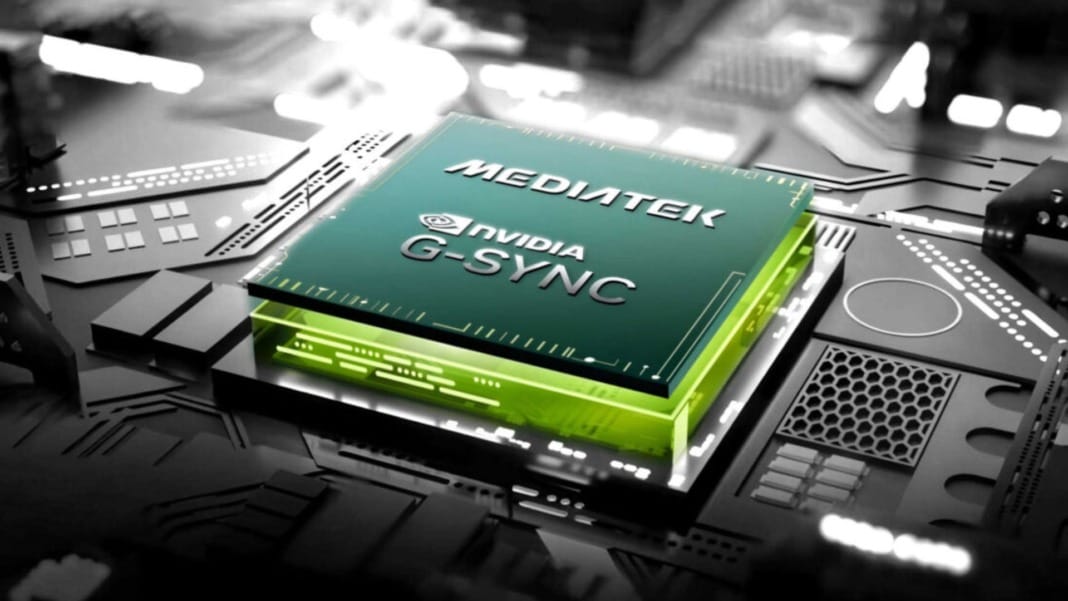Nvidia has announced a significant shift in its G-Sync technology, removing the need for a proprietary hardware module. This change comes as Nvidia partners with MediaTek to integrate all current and future G-Sync features directly into MediaTek’s monitor scalers. This move marks a new chapter for gaming monitors, making Nvidia’s advanced display technology more accessible than ever.
A new partnership for greater accessibility
Nvidia is working closely with MediaTek, a leader in the monitor scaler market, to bring the full range of G-Sync technologies to a broader audience. Previously, G-Sync required a dedicated hardware module to synchronise a monitor’s refresh rate with a GPU, effectively eliminating screen tearing, reducing display stutter, and lowering input lag. Now, with MediaTek’s scalers, all these benefits can be enjoyed without needing a specific G-Sync module.
“We are collaborating with MediaTek to integrate G-Sync into their leading monitor scalers,” says Nvidia. “This partnership allows us to bring all G-Sync technologies, including our latest innovation, Pulsar, to a broader range of gamers. We will continue to develop new G-Sync technologies using MediaTek’s scaler solutions.”
The original G-Sync technology, introduced in 2013, relied on a dedicated module to deliver its groundbreaking features. However, in 2019, Nvidia launched G-Sync Compatible, which allowed variable refresh rate monitors using FreeSync technology to benefit from some G-Sync features, though not all. This latest development with MediaTek means that more monitors will now support the complete G-Sync suite, including features previously reserved for G-Sync module-equipped displays.
New monitors to feature full G-Sync support
The first monitors to benefit from this Nvidia-MediaTek partnership are set to hit the market soon. AOC’s Agon Pro AG276QSG2, Acer’s Predator XB273U F5, and Asus’ ROG Swift 360Hz PG27AQNR will be the pioneers of this new era of G-Sync monitors. All three models will offer 360Hz refresh rates, 1440p resolution, and HDR support, along with Nvidia’s latest G-Sync Pulsar technology, which reduces motion blur and ghosting to enhance the gaming experience.
These monitors represent the cutting-edge of display technology, combining ultra-fast refresh rates with high resolution and advanced HDR capabilities. Including G-Sync Pulsar support in these models highlights Nvidia’s commitment to delivering the best gaming experience, even without needing a dedicated G-Sync module.
Nvidia and MediaTek’s broader ambitions
This announcement is amidst growing speculation about Nvidia’s plans with MediaTek, particularly for AI-powered PCs. Rumours have circulated for months that the two companies are collaborating on an Arm-based chip designed explicitly for AI PCs and possibly even a dedicated chip for handheld gaming devices. Nvidia currently provides its Tegra X1 GPU for the Nintendo Switch and is rumoured to develop a more powerful custom chip for the upcoming Switch 2.
While Nvidia has yet to comment on these AI PC rumours, there are indications that the company may launch Arm PC chips as early as 2025. During an interview with Bloomberg in May, Dell CEO Michael Dell hinted at Nvidia’s potential entry into the AI PC market, suggesting that Nvidia could play a significant role in this emerging field next year.
"AI of course is going to transform gaming," says Nvidia CEO Jensen Huang of how its GPUs will be used in PCs in the future https://t.co/KB79RIAgEI pic.twitter.com/EHI2ChkHMQ
— Bloomberg TV (@BloombergTV) May 22, 2024
This partnership between Nvidia and MediaTek is likely the beginning of a broader collaboration that could reshape the future of both gaming and AI technology.




